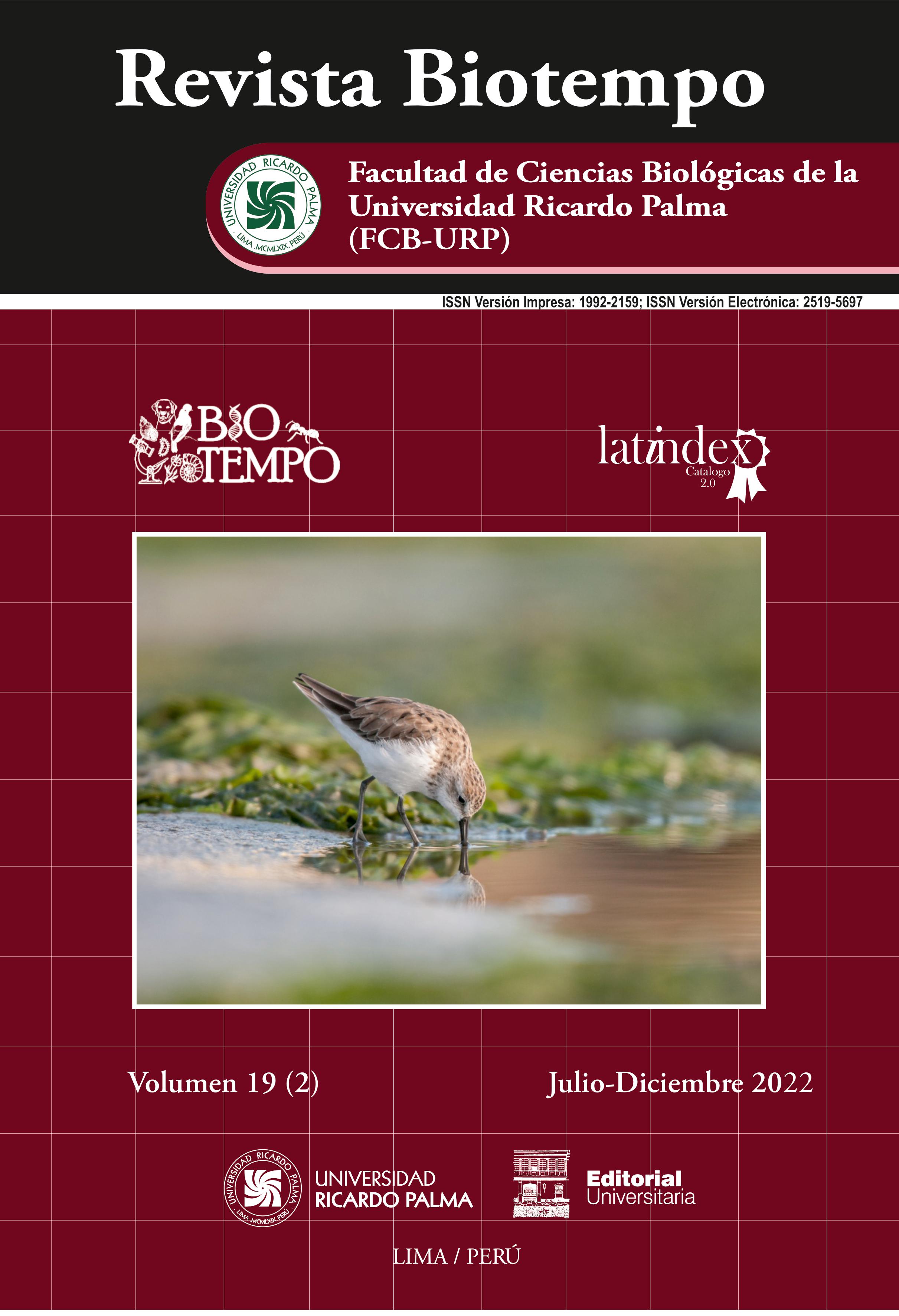EVALUATION OF THE REPELLENT AND BIOCIDAL EFFECT OF THE EXTRACT AND POWDER OF LEAVES OF AZADIRACHTA INDICA A. JUSS., (NEEM) ON ULOMOIDES DERMESTOIDES (FAIRMARE,1893) (COLEOPTERA: TENEBRIONIDAE)
DOI:
https://doi.org/10.31381/biotempo.v19i2.5141Keywords:
Azadirachta indica , Ulomoides dermestoides , pests , grains , biocidal , repellentAbstract
Ulomoides dermestoides (Fairmare,1893), commonly known as the peanut weevil, is an insect belonging to the order Coleoptera, family Tenebrionidae; it is characterized by being a pest of different stored grains such as peanuts, corn, and oats, among others; generating large economic losses. Azadirachtin is a triterpenoid present in the leaves, seeds, and trunk of the Azadirachta indica A. Juss (Neem) tree, belonging to the Meliaceae family, which has demonstrated a biocidal effect on different pests, acting at a reproductive, hormonal, digestive and neurological level, without causing harmful effects. to the ecosystem. In this study, the biocidal and repellent effect of the extract and powder of A. indica leaves on U. dermestoides was evaluated by spraying the leaves dehydrated for 48 h at 40°C and their extract by hydrodistillation. The experimental design to evaluate the biocidal and repellent effect consisted of two groups with dilutions with distilled water in proportions of 1:0 and 1:1, respectively, both for the extract (Te1 and Te2) and for the powder (Tp1 and Tp2) and a control. for both evaluations (Ce and Cp). Obtaining as a result that it has a low biocidal effect in both presentations (extract and powder), but it has a greater repellent effect in both presentations.










